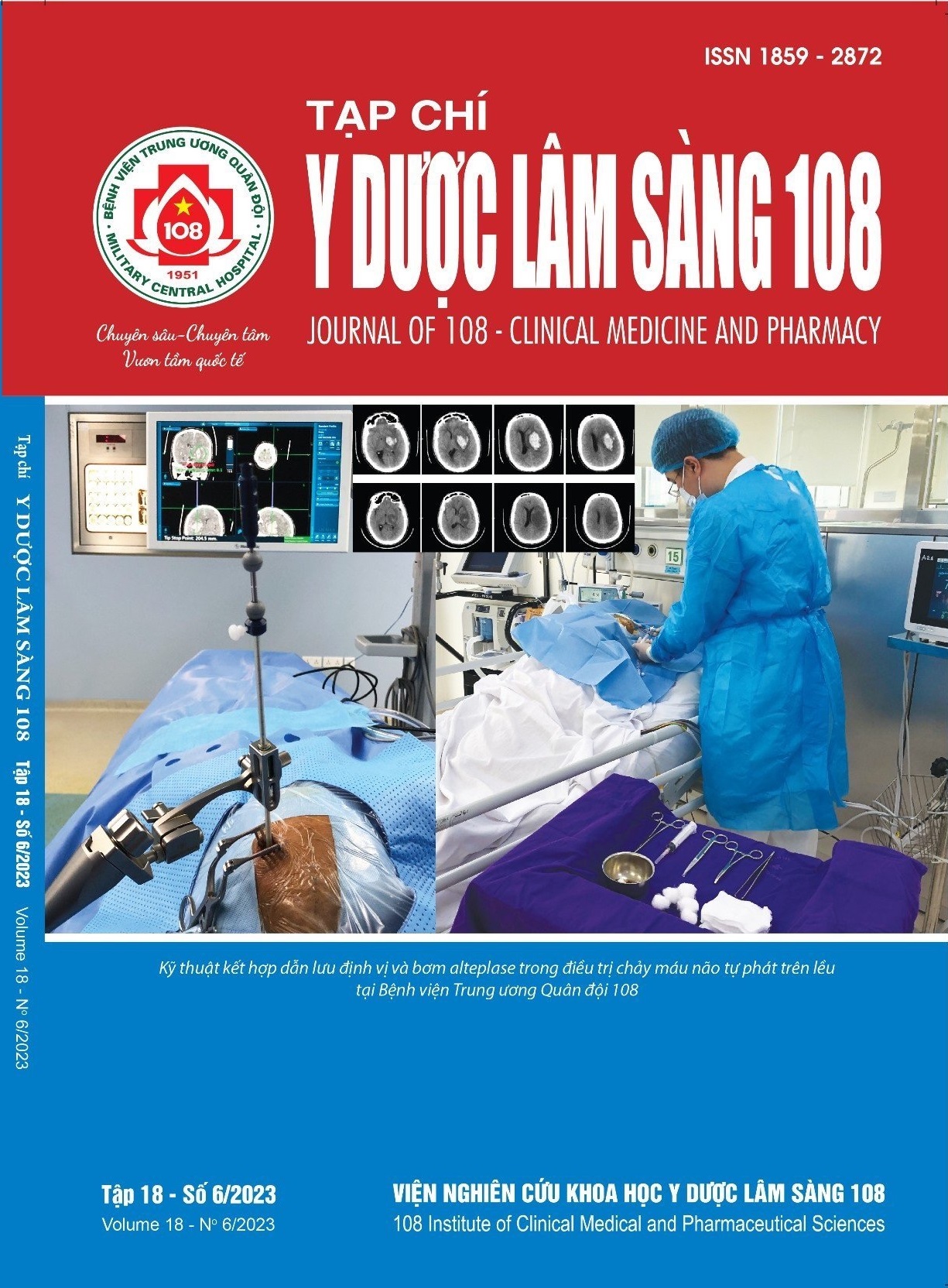Electrocardiogram and cardiac electrophysiology characteristics of the premature ventricular contractions originating from right ventricle
Main Article Content
Keywords
Abstract
Objective: To describe the electrocardiogram and electrophysiological characteristics of right ventricular premature ventricular contractions (PVCs). Subject and method: A cross-sectional descriptive study on 152 patients with right ventricular PVCs undergoing electrophysiological study at Hanoi Heart Hospital from 01/2019 to 6/2023. All these patients underwent 12-lead electrocardiogram, electrophysiological study. Result: 145 patients with RVOT-originated PVCs had the following characteristics: R wave in D2, D3, aVF, dominant S wave in aVR, aVL; Transitional position in V4 accounted for the highest rate of 60.7%, QRS time 136.7 ± 14.5ms. Patients in non-RVOT: Leads D2, D3 are positive, negative co-direction or opposite direction; 100% lead aVL positive; transition in V2, V3 accounted for 85.7%, QRS time 122 ± 15.5ms. Electrophysiological exploration PVCs from RVOT, almost cases was in the anterior wall, the septum and the low region of RVOT with the rates: 64.8%, 72.4%, 66.9%. Meanwhile, in the group non-RVOT, 7 patients all located tricuspid valve annulus (TVA), of which 6 cases in septum near His accounted for 85.7% and only 1 case on the lateral wall of TVA accounted for 14.3%. Conclusion: PVCs in RVOT has an R wave pattern at D2, D3, aVF that usually originates in the anterior wall, septum wall and lower region of the RVOT. The D2, D3 leads can be positive, negative co-directed, or opposite direction and mostly from the TVA near His.
Article Details
References
2. Phạm Trường Sơn, Nguyễn Văn Hinh (2022) Nghiên cứu đặc điểm điện sinh lý và kết quả triệt đốt ngoại tâm thu thất nguyên phát đường ra thất phải. Tạp chí Y Dược lâm sàng 108, 17(4), tr. 167-173.
3. Vũ Mạnh Tân và cộng sự (2015) Đặc điểm lâm sàng và vị trí khởi phát của ngoại tâm thu thất/nhịp nhanh thất phải vô căn ở bệnh nhân được điều trị bằng năng lượng sóng có tần số radio. Tạp chí Y Dược lâm sàng 108, 10(2), tr. 138-142.
4. Anderson RD, Kumar S, Parameswaran R et al (2019) Differentiating right and left-sided outflow tract ventricular arrhythmias: Classical ECG signatures and prediction algorithms. Circ Arrhythm Electrophysiol 12(6): 007392.
5. Cheng Z, Cheng K, Deng H et al (2013) The R-wave deflection interval in lead V3 combining with R-wave amplitude index in lead V1: A new surface ECG algorithm for distinguishing left from right ventricular outflow tract tachycardia origin in patients with transitional lead at V3. Int J Cardiol 168(2): 1342-1348.
6. Farzam K and Richards JR (2023) Premature Ventricular Contraction. StatPearls, StatPearls Publishing, Treasure Island (FL).
7. Shima T, Ohnishi Y, Inoue T et al (1998) The relation between the pacing sites in the right ventricular outflow tract and QRS morphology in the 12-lead ECG. Jpn Circ J 62(6): 399-404.
8. Tada H, Tadokoro K, Ito S et al (2007) Idiopathic ventricular arrhythmias originating from the tricuspid annulus: Prevalence, electrocardiographic characteristics, and results of radiofrequency catheter ablation. Heart Rhythm 4(1): 7-16.
9. Van Herendael H, Garcia F, Lin D et al (2011) Idiopathic right ventricular arrhythmias not arising from the outflow tract: Prevalence, electrocardiographic characteristics, and outcome of catheter ablation. Heart Rhythm 8(4): 511-518.
10. Zhang Z, Hou X, Qian Z et al (2021) Matrix mapping of different idiopathic right ventricular outflow arrhythmias. Am J Transl Res 13(8): 8952-8964.
11. Sana M, Al-Khatib M, William G, Stevenson M, and Michael J, Ackerman M (2017) 2017 AHA/ACC/HRS guideline for management of patients with ventricular arrhythmias and the prevention of sudden cardiac death. Circulation 138: 272-391.
 ISSN: 1859 - 2872
ISSN: 1859 - 2872
